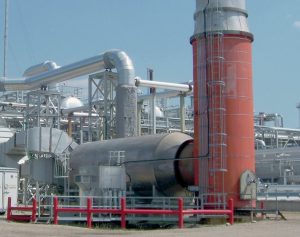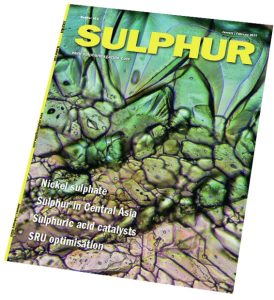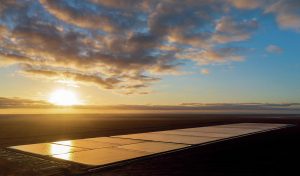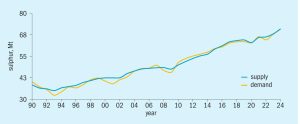
Misr Phosphate starts 'low-dust' rock exports
Misr Phosphate has started to export phosphate rock with a low dust content via the port of Damietta on Egypt’s Mediterranean coast.

Misr Phosphate has started to export phosphate rock with a low dust content via the port of Damietta on Egypt’s Mediterranean coast.

The 2030 greenhouse gas emission reduction goals in the European Union are driving oil and gas producers to reduce CO2 emissions wherever possible. This extends to even the incinerator attached to a sulphur recovery unit (SRU). In this article Sulphur Experts review the role of the incinerator, how the three most common European TGUs each affect the demand on the incinerator itself, and the potential reduction in CO2 emissions for a generic facility of each type.

The start of a new year is a traditional time to take stock of the previous 12 months and look ahead to the next. In this regard, CRU’s most recent annual client survey, conducted at the end of December last year, makes interesting reading as to your own concerns for 2025 and beyond. There were numerous responses across commodity and financial sectors, and broadly based worldwide, if slightly skewed towards Europe and North America, but across all of these the key worry for the coming year clearly emerged as trade tariffs and protectionism. This is perhaps unsurprising, given incoming US president Donald Trump’s avowed intent to impose blanket 20% tariffs on all goods entering the US, and up to 60% on China. While most clients did not think tariffs would rise as much as some of Trump’s rhetoric might suggest, most expect rises of 5-10% across the board, and Asian businesses are most concerned. CRU’s most recent position paper on US tariffs highlights some of the internal political and legal challenges in implementing these, but does acknowledge that some rises will be inevitable, and may well produce the kind of reciprocal measures last seen in the previous Trump administration’s trade war with China and the EU in 2018.

The prospect of a drastic expansion in potassium sulphate production has been linked to a plethora of projects in Australia, Ethiopia, and Eritrea. These have sought to take advantage of market tightness and high price premiums. Yet investor interest in supposedly promising projects has waned over the last few years. In this insight article, CRU’s Alexander Chreky explains the reasons behind the high project failure rate, as well as highlighting some limited successes.

QatarEnergy has announced the construction of a new world-scale ammonia-urea production complex at Mesaieed Industrial City in Qatar.

Fertilizer International presents a global round-up of current potash projects.

The dry bulk market is forecast to cool, after a year of high freight rates driven by demand shocks. Should ships return to the Red Sea during 2025, then the market will weaken even more. This development, explains BIMCO shipping analyst Filipe Gouveia, would particularly affect the supramax and handysize vessels typically used in fertilizer shipping.

Significant changes to the level and location of sulphur inventory over the last two years have caused swings in short-term supply availability. Inventory plays a necessary role in balancing the sulphur market but exactly when, where, how, and why inventory enters the market can trigger a diverse range of price responses. In this insight article, CRU’s Peter Harrisson looks at how inventory change influences sulphur availability and pricing.

The ‘golden batch’ refers to stable periods at production plants that consistently generate high quality NPK products at high output. Yara’s Golden Batch digital tool digitises and stores past data from optimal production runs, making these easy to retrieve and implement again in future. Yara’s Marianne Ytterbø provides an overview of this novel digital tool, explains how it was developed, and highlights key benefits.

We look at the future of polyhalite mining and its use as a fertilizer following Anglo American’s announcement that investment in its UK-Based Woodsmith mine will fall to zero in 2026 under current plans.